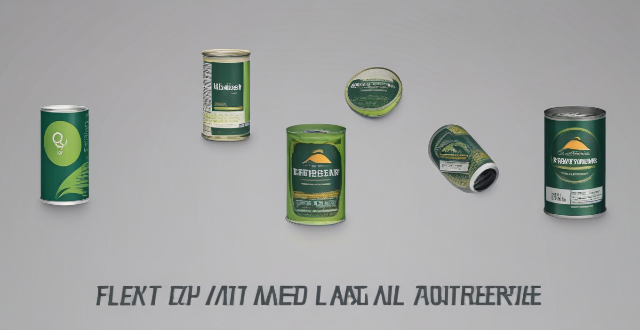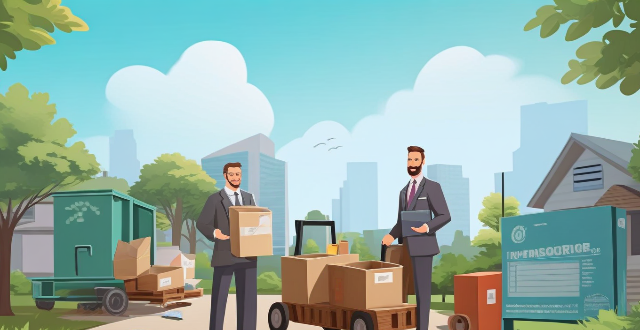Items Flash

How do flash sales work in the context of online shopping ?
Flash sales are a popular marketing strategy used by online retailers to boost sales and clear inventory. These limited-time offers are typically characterized by steep discounts on select products for a short period, creating a sense of urgency and exclusivity that can drive significant customer engagement and purchases. Here's a breakdown of how flash sales work in the realm of online shopping: The Set-Up: - Timing: Flash sales are timed events, often scheduled for high-traffic periods or slow-sales seasons to stimulate interest. They might last a few hours, a day, or over a weekend. - Product Selection: Retailers carefully curate the items included in flash sales to maximize appeal. These could be overstocked goods, seasonal merchandise, discontinued items, or even new releases strategically offered at a discount to generate buzz. - Promotion: Promotion is key to the success of a flash sale. Retailers will use email marketing, social media ads, website banners, and other channels to announce the upcoming sale and build anticipation. The Execution: - Start of the Sale: When the sale begins, customers rush to take advantage of the limited-time offers. Websites often see a spike in traffic during this period. - Limited Availability: To enhance the sense of urgency, retailers will limit the quantity of discounted items available. This encourages quick decision-making and immediate purchase. - Dynamic Pricing: Sometimes, flash sales employ dynamic pricing strategies where the price drops as the sale progresses or as more items are sold. This can further spur buying behavior. The Experience: - Fast Checkout: Online platforms are optimized for quick transactions during flash sales to handle the high volume of customers and prevent cart abandonment due to slow processing times. - Customer Service: Retailers often bolster their customer service teams during flash sales to handle inquiries and issues promptly, ensuring a smooth shopping experience. - Feedback Loop: After the sale, retailers analyze its performance through metrics like conversion rates, customer feedback, and revenue generated. This information helps refine future flash sale strategies. Benefits and Challenges: - Benefits: Increased Sales, Inventory Management, Customer Engagement - Challenges: Website Performance, Logistics, Perception

What are the essential items to pack for a backpacking trip ?
Essential Items to Pack for a Backpacking Trip: Shelter and Sleeping Gear, Clothing, Food and Water, Cooking and Eating Utensils, First Aid Kit and Safety Items, Navigation Tools, and Miscellaneous Items.

What are some common pitfalls to avoid when buying second-hand items ?
When buying second-hand items, it's important to inspect them thoroughly for any signs of damage or wear and tear. You should also verify the authenticity of luxury items and research their value to ensure you're getting a fair price. Be wary of scams and consider the return policy before making a purchase. By following these tips, you can avoid common pitfalls and find great deals on high-quality products.

How can I save money while shopping for luxury items ?
Shopping for luxury items doesn't have to be expensive if you follow these tips. Set a budget, research prices, wait for sales, choose timeless designs, invest in quality, consider pre-owned items, negotiate prices, and avoid impulse buying to save money while enjoying the finer things in life.

How do Chinese consumers typically celebrate Double 11 Shopping Carnival ?
The Double 11 Shopping Carnival, also known as Singles' Day, is the world's largest online and offline shopping day. It originated in China and is celebrated on November 11th each year. Chinese consumers typically celebrate this event by engaging in various activities and shopping sprees such as adding items to their wishlist, setting budgets, following their favorite brands, shopping online, participating in flash sales, watching live streams, shopping offline, sharing their experience, exchanging or returning items, and planning for next year's event.

What are the essential items to include in a disaster preparedness kit ?
A disaster preparedness kit should include essential items such as water, non-perishable food, a first aid kit, warm clothing and bedding, light sources, communication devices, tools, cash, important documents, and personal items. It is crucial to regularly check and replace expired items to ensure the kit is ready for any emergency situation.

What is the difference between arc flash and arc blast ?
Arc flash and arc blast are both hazardous electrical phenomena that can occur in industrial environments. The primary difference between the two lies in the amount of energy released during the event, with arc blast being more severe due to its explosive nature. Proper safety measures and equipment maintenance are essential for preventing both types of events and minimizing their impact on personnel and equipment.

What kind of discounts should I offer during a clearance sale ?
Offering the right discounts during a clearance sale is crucial for attracting customers and clearing out inventory. Here are some strategies to consider: 1. Percentage-Based Discounts: Start with moderate discounts of around 20-30% on selected items and increase gradually as the sale progresses. 2. Buy One, Get One Free (BOGO) Offers: Select slow-moving items or bundle complementary items together. 3. Tiered Discounts: Encourage customers to spend more by offering tiered discounts based on the amount spent or quantity purchased. 4. Time-Limited Deals: Run short-term promotions like flash sales or countdown deals to create a sense of urgency. 5. Membership or Loyalty Discounts: Offer exclusive deals for members of your loyalty program or reward repeat customers with extra savings. 6. Price Threshold Discounts: Apply discounts only when a certain amount is spent or offer a maximum price guarantee. 7. Gift with Purchase (GWP): Reward loyal customers with free gifts or include promotional items with purchases over a certain amount. 8. Clearance Rack or Section: Designate a specific area or rack for clearance items and use prominent signage and labels to highlight the savings. 9. Online-Exclusive Deals: Offer exclusive online deals to encourage online shopping and reduce the burden on physical store inventory. 10. Combination Discounts: Mix and match different types of discounts, such as a percentage-based discount combined with a GWP offer or allow customers to combine multiple discounts for maximum savings. Remember, the goal of a clearance sale is to move inventory while still maintaining profit margins and brand reputation. Be strategic in your discounting approach and communicate clearly with customers about the deals you're offering.

What are the best practices for recycling household items ?
Recycling household items is crucial for reducing waste and conserving resources. Best practices include knowing local guidelines, cleaning items, flattening cardboard, separating recyclables, using bins properly, donating usable items, composting organic waste, and buying products with recyclable packaging. By following these steps, individuals can contribute to a more sustainable future and reduce their environmental impact.

How do I know if the discounted items at Outlet Stores are of good quality ?
Outlet stores offer discounted items, but it's important to assess their quality before buying. Check for manufacturer defects, research brand reputation, compare prices with non-discounted items, and ask about return policies.

What are some creative ways to repurpose second-hand items ?
Repurposing second-hand items is a creative and sustainable practice that can save money and reduce waste. Here are some ideas for giving new life to pre-loved items: furniture makeover, clothing transformations, kitchenware reinvention, accessory revamps, artwork and décor, and kids' toys reimagined. By getting creative with second-hand items, we can contribute to promoting sustainability while saving money.

How can I safely transport large or fragile second-hand items ?
The article provides a detailed guide on how to safely transport large or fragile second-hand items. It starts by listing the necessary packing materials and then moves on to assessing the item for pre-existing damage. The article emphasizes the importance of disassembling larger items, proper packing techniques for both fragile and large items, and loading the vehicle carefully. It also includes tips for safe driving during transit and careful unloading. The article concludes with a recommendation to consult professional movers when unsure about handling such items.

What are some fast techniques for sorting and storing items ?
Sorting and storing items can be a time-consuming task, but there are several fast techniques that can help you organize your belongings efficiently. Here are some tips to get started: 1. Declutter First: Remove unnecessary items from your space. Donate or sell items that are still in good condition. Dispose of items that are broken or unusable. 2. Categorize Your Items: Categorize your items into groups based on their purpose, frequency of use, or any other criteria that make sense for your situation. This will help you determine where each item should be stored. 3. Use Containers and Labels: Invest in containers of various sizes to store your sorted items. Clear containers are great because they allow you to see what's inside without opening them. Label each container with its category or contents to make it easy to find what you need quickly. 4. Utilize Vertical Space: Shelves, hanging organizers, and wall-mounted racks can help maximize your storage capacity and keep things off the floor. 5. Maintain Organization: After sorting and storing your items, it's crucial to maintain their organization regularly. Set aside time each week or month to go through your belongings and ensure everything is in its proper place.

What are the top websites for purchasing second-hand or refurbished items ?
Purchasing second-hand or refurbished items is a great way to save money while also being environmentally conscious. Here are some of the top websites for buying such items: 1. eBay is one of the largest online marketplaces where you can find both new and used items. It offers a wide range of products, including electronics, clothing, furniture, and more. 2. Craigslist is a classified advertisements website where people can post listings for various items, including second-hand goods. 3. Facebook Marketplace is a platform within Facebook where users can buy and sell items locally. 4. OfferUp is a mobile app that allows users to buy and sell items locally. 5. Swappa is an online marketplace specifically designed for buying and selling gently used technology like smartphones, laptops, and tablets. 6. Gazelle is a website that specializes in buying and selling refurbished electronics, including smartphones, tablets, and laptops.

How can I maximize profits during a clearance sale ?
Clearance sales are a great opportunity for retailers to clear out old inventory and make room for new products. However, it's important to approach clearance sales strategically in order to maximize profits. Here are some tips on how to do so: 1. Analyze Your Inventory: Before you start your clearance sale, take the time to analyze your inventory. Identify which items have been sitting on the shelves for a long time and which ones are still selling well. This will help you determine which items to include in your clearance sale and which ones to keep at full price. 2. Set Competitive Prices: When setting prices for your clearance items, be sure to research competitors' prices and set yours accordingly. You want to offer customers a deal that they can't find elsewhere, but also ensure that you're not selling your products for less than they're worth. Consider offering tiered discounts, where customers receive larger discounts as they purchase more items. 3. Promote Your Sale: Promoting your clearance sale is key to attracting customers and maximizing profits. Use social media, email marketing, and in-store signage to spread the word about your sale. Consider partnering with local influencers or bloggers to help promote your sale and reach a wider audience. 4. Offer Bundle Deals: Bundle deals are a great way to encourage customers to buy multiple items during your clearance sale. For example, if a customer purchases a dress, offer them a discount on a matching pair of shoes or accessories. This not only helps move more products but also increases the overall value of each transaction. 5. Create Urgency: Creating a sense of urgency can motivate customers to make purchases during your clearance sale. Consider offering limited-time discounts or "flash sales" where certain items are discounted for a short period of time. This can encourage customers to act quickly and make purchases before the sale ends. 6. Optimize Your Store Layout: The layout of your store can have a significant impact on sales during a clearance event. Make sure that clearance items are easily accessible and prominently displayed. Consider creating dedicated sections or aisles for clearance items to make it easy for customers to browse and find what they're looking for. 7. Train Your Staff: Your staff plays a crucial role in the success of your clearance sale. Make sure they are trained on the details of the sale, including pricing and any special promotions. Encourage them to upsell customers by suggesting complementary products or bundle deals. Happy, knowledgeable staff can go a long way in creating a positive shopping experience for customers. By following these tips, you can maximize profits during your clearance sale while providing customers with great deals on products they love.

What are the benefits of recycling and reusing second-hand items ?
Recycling and reusing second-hand items offer significant benefits for the environment, economy, and society. By reducing landfill waste, conserving natural resources, and lowering emissions, these practices help to mitigate environmental challenges. Economically, they provide cost savings for individuals and create job opportunities. Socially, they promote sustainability and community engagement. Overall, recycling and reusing second-hand items are essential steps towards a more sustainable future.

What is the ideal way to pack fragile items for a journey ?
Packing fragile items for a journey can be a daunting task, but with the right approach, you can ensure that your precious belongings arrive at their destination safely. Here are some tips on how to pack fragile items ideally: 1. Use proper packing materials such as bubble wrap, packing paper, foam peanuts, and anti-static polyethylene bags. 2. Wrap each item individually to reduce the risk of damage during transit. 3. Use boxes of appropriate size to accommodate the item without too much extra space or pressure. 4. Label boxes appropriately with clear, legible writing to indicate that the box contains fragile items and which direction is up.

Can you suggest any essential items I should always pack for a vacation ?
When planning a vacation, it's important to pack the essential items that will ensure your comfort and safety throughout the trip. These include travel documents, clothing, toiletries, electronics and accessories, and miscellaneous items such as a travel pillow, reusable water bottle, snacks, reading material, cash and credit cards, and a travel journal. By packing these essentials in your carry-on luggage, you can ensure a comfortable and enjoyable vacation experience.